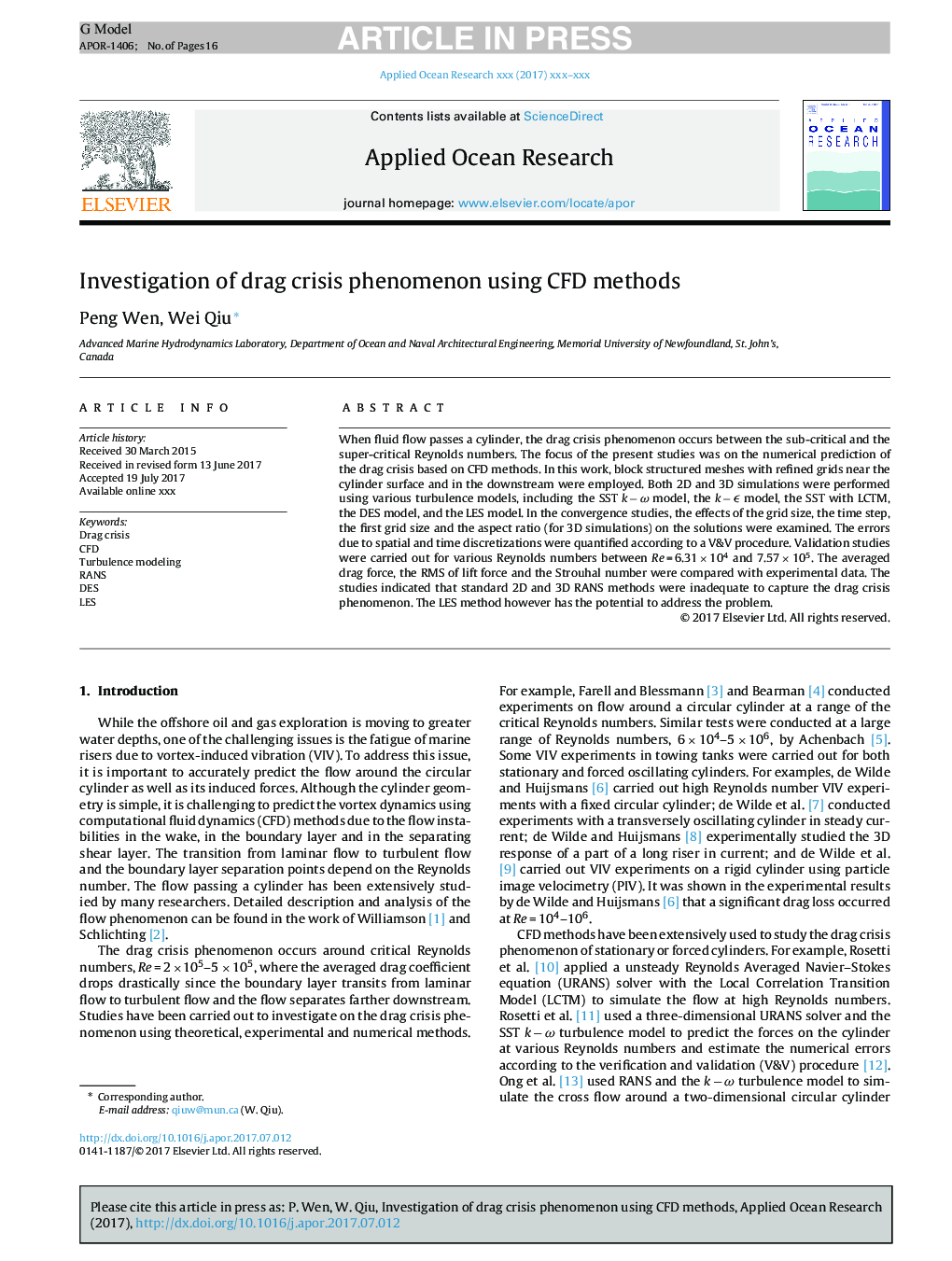| Article ID | Journal | Published Year | Pages | File Type |
|---|---|---|---|---|
| 5473288 | Applied Ocean Research | 2017 | 16 Pages |
Abstract
When fluid flow passes a cylinder, the drag crisis phenomenon occurs between the sub-critical and the super-critical Reynolds numbers. The focus of the present studies was on the numerical prediction of the drag crisis based on CFD methods. In this work, block structured meshes with refined grids near the cylinder surface and in the downstream were employed. Both 2D and 3D simulations were performed using various turbulence models, including the SST k âÂ Ï model, the k â ϵ model, the SST with LCTM, the DES model, and the LES model. In the convergence studies, the effects of the grid size, the time step, the first grid size and the aspect ratio (for 3D simulations) on the solutions were examined. The errors due to spatial and time discretizations were quantified according to a V&V procedure. Validation studies were carried out for various Reynolds numbers between Re = 6.31 Ã 104 and 7.57 Ã 105. The averaged drag force, the RMS of lift force and the Strouhal number were compared with experimental data. The studies indicated that standard 2D and 3D RANS methods were inadequate to capture the drag crisis phenomenon. The LES method however has the potential to address the problem.
Related Topics
Physical Sciences and Engineering
Engineering
Ocean Engineering
Authors
Peng Wen, Wei Qiu,
